Thank you so much! I love putting chicken and veggies on skewers.
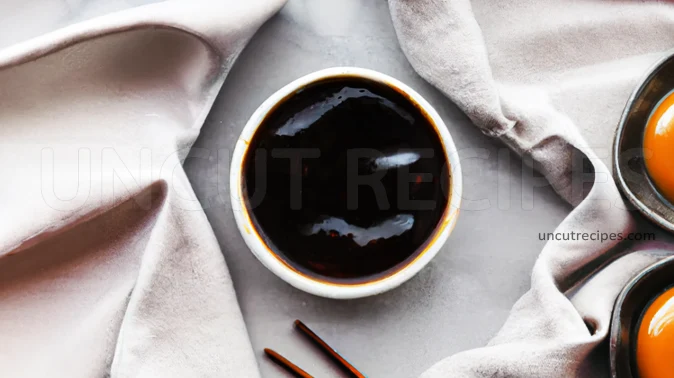
Picture yourself at a lively street fair in Japan, the enticing aroma of grilled meats wafting through the air. You follow the scent and find yourself at a bustling Yakitori stall. The sizzle of skewers on the grill, the laughter of friends enjoying their meal, and the centerpiece of it all, the shining, rich Yakitori sauce that brings everything together. It's not just a sauce; it's a celebration of flavor, community, and the art of simplicity.
Now, imagine bringing that very essence right into your kitchen. Our Yakitori Sauce recipe allows you to recreate that same depth of flavor and excitement in your very own home. With a beautiful blend of traditional ingredients like Soy Sauce, Mirin, Sake, and a hint of Ginger and Garlic, this sauce is the heart of many beloved Japanese dishes.
The magic of Yakitori Sauce lies in the way the ingredients come together, in a dance of sweet and savory, tangy and smooth. It's a taste that lingers in your mouth, calling you back for just one more bite.
What's more beautiful is how accessible and doable this recipe is. With a saucepan, a stove, and a touch of patience, you'll find yourself crafting a sauce that's not only mouth-watering but also filled with authenticity and tradition.
So why not bring a piece of the vibrant Japanese street food culture into your meals? Whether it's a weekend BBQ with friends or a simple family dinner, this Yakitori Sauce is sure to become a favorite. Let's dive in and start cooking, one delightful spoonful at a time!
JUMP TO:
INGREDIENTS:
For those using this sauce for Yakitori, a popular Japanese grilled chicken dish, traditionally seasoned with one of two simple flavorings: salt (shio) or yakitori sauce (known as "tare," pronounced [ta-reh]). The choice between these two options can transform the dish's taste, highlighting different aspects of the chicken's flavor.
Yakitori Sauce (Tare): Tare is a rich, glaze-like sauce that balances sweet and salty flavors. The foundation of tare is a blend of soy sauce, mirin, sake, and sugar. While this combination is common, variations can occur, and individual preferences may lead to the addition of other ingredients such as ginger or garlic. Despite the potential for complexity, a minimalist approach often shines, allowing the essential ingredients to shine through. This version, after several tests and adjustments, delivers a delightful balance, enhancing the taste of the grilled chicken without overpowering it.
Salt (Shio): Alternatively, the purest taste of yakitori is achieved by using just salt before grilling. This minimalist treatment accentuates the natural flavors of the chicken. The absence of additional seasonings allows the meat's essence to come to the forefront, transformed by the simple act of grilling. The resulting dish can be surprisingly rich and satisfying, showcasing the quality of the chicken and the skill of the chef.
Soy Sauce: Opt for a high-quality Japanese soy sauce that has been naturally brewed. Low-sodium options can be used if you're looking to reduce salt content without sacrificing flavor. Soy sauce is the backbone of Yakitori sauce, providing depth and richness, so choosing the right type is essential.
Brown Sugar: Choose organic or unrefined brown sugar to add a rich sweetness and a hint of molasses flavor. The amount can be adjusted to taste, and as an alternative, honey or maple syrup can be used for different flavor profiles.
Ginger: Fresh ginger root is preferable for its potent and fresh flavor. It adds a spicy kick and aromatic quality to the sauce. Avoid powdered ginger, as it won't provide the same freshness.
Rice Vinegar: Use an unseasoned rice vinegar that doesn't contain added sugar or salt. This ingredient brightens the sauce with a touch of acidity. If unavailable, white wine vinegar mixed with a pinch of sugar can be a substitute.
Garlic: Fresh garlic cloves should be used rather than pre-minced or powdered versions. The freshness and pungency of a fresh clove add a depth of flavor that can't be replicated with pre-prepared products.
MAIN STEPS:
Simmering Process: The process of simmering the sauce is crucial to developing its rich flavor and desired consistency. When the sauce reaches a boil, it must be immediately reduced to a gentle simmer to avoid burning or reducing too rapidly. Patience and attentive observation are key here; simmering it for too long can make the sauce too thick and salty, while not enough time may leave it thin and lacking depth. Stir occasionally to prevent sticking and to help the ingredients blend well.
Adjustment of Flavors: The addition of garlic and ginger adds complexity, but their flavors can become overpowering if left to simmer too long. By removing them after about 5 minutes, you can control the intensity of these flavors. Always taste and adjust the seasoning, if necessary. The sauce should strike a balance between sweet and salty, and personal preference will guide these adjustments.
Consistency Check: Achieving the perfect consistency for Yakitori Sauce is vital for it to coat the grilled chicken effectively. It should have a syrup-like texture that clings to the back of a spoon. If it's too thin, it won't adhere well to the meat, and if it's too thick, it may become overly concentrated in flavor. Observing the sauce's transformation and using the spoon test are important steps to ensure that the consistency is just right.
SERVED WITH:
Starter: Gyoza (Japan): Pan-fried dumplings typically filled with minced pork, cabbage, chives, and ginger. Dipping them in Yakitori Sauce adds an extra layer of flavor.
Side Dish: Grilled Asparagus (International): Grilled asparagus stalks with a light brush of Yakitori Sauce can create a flavorful and nutritious side dish that complements meat-based main courses.
Main Course: Yakitori Chicken Skewers (Japan): Traditionally grilled chicken pieces on skewers. Either with salt or with Yakitori Sauce is applied while grilling, adding a rich, smoky flavor.
Main Course: Teriyaki Salmon (Japan): Salmon fillets marinated and glazed with a mixture of Yakitori Sauce and additional ingredients like ginger. It's grilled or pan-seared to perfection.
Side Dish: Stir-Fried Vegetables (China): Mixed vegetables such as bell peppers, broccoli, and carrots stir-fried with a splash of Yakitori Sauce, enhancing the overall taste.
Dessert: Mochi Ice Cream (Japan): Though not directly paired with Yakitori Sauce, this sweet and chewy rice cake filled with ice cream can be a delightful dessert to cleanse the palate after a meal rich in umami flavors.
Drink: Sake (Japan): This traditional Japanese rice wine is often enjoyed with grilled meat and can be a lovely pairing with dishes using Yakitori Sauce.
ALTERNATIVES:
Appetizer: Korean Bulgogi (South Korea): Thinly sliced beef marinated in a mixture of soy sauce, sugar, sesame oil, and garlic, then grilled. The similarities in ingredients with Yakitori Sauce make it an exciting alternative.
Side Dish: Stir-Fried Green Beans with Oyster Sauce (China): Green beans stir-fried with garlic, soy sauce, and oyster sauce. This Chinese dish offers a savory and salty flavor that's reminiscent of Yakitori Sauce.
Main Course: Filipino Adobo Chicken (Philippines): Chicken braised in soy sauce, vinegar, garlic, and bay leaves. The combination of soy sauce and garlic gives this dish a flavor profile that parallels Yakitori Sauce.
Main Course: Teriyaki Grilled Shrimp (Japan): Grilled shrimp marinated in a teriyaki sauce made of soy sauce, mirin, and sugar. It shares key ingredients with Yakitori Sauce but offers a seafood twist.
Side Dish: Sautéed Spinach with Soy and Sesame (Japan): Spinach quickly sautéed with soy sauce, sesame seeds, and a touch of sugar. A healthy and flavorful side dish that echoes the flavors found in Yakitori Sauce.
Dessert: Ginger Poached Pears (China): Pears poached in a syrup containing ginger, sugar, and star anise. The inclusion of ginger ties this dessert to the flavor profile of Yakitori Sauce.
Drink: Ginger-Infused Sake (Japan): Sake warmed and infused with fresh ginger. This drink can complement the flavors in Yakitori Sauce and works well with dishes that feature similar taste profiles.
HISTORY:
Yakitori sauce, also known as "tare," is an integral part of Japanese culinary culture. Often used for grilling skewered chicken, it combines ingredients like soy sauce, mirin, sake, and sugar to create a rich and flavorful glaze. Though its roots are intertwined with the history of yakitori itself, the sauce's evolution is a fascinating culinary story.
The origins of yakitori, which translates to "grilled chicken," date back to the Edo period (17th to 19th centuries) in Japan. As urbanization increased, street food vendors began to offer skewered and grilled meats, including chicken. It's believed that during this time, the sauce began to develop as a complementary flavor to the grilled chicken, accentuating its taste with sweetness and umami.
The creation of yakitori sauce isn't attributed to a single individual, but rather to an organic development within Japanese cooking. Chefs and vendors likely experimented with different combinations of available ingredients, leading to the sauce's signature taste. Over time, different regions in Japan have added their unique twist, further diversifying the sauce's flavors.
Culturally, yakitori sauce has transcended its street food origins to become a staple in many Japanese households and restaurants. Yakitori itself is a communal food, often enjoyed with friends and family at social gatherings. The sauce's rich flavor not only elevates the taste of the chicken but also symbolizes a shared culinary experience.
As Japanese cuisine gained international recognition, so did yakitori and its accompanying sauce. The sauce's ingredients, mirin and sake, were historically essential in Japanese cooking, but with yakitori sauce, they reached a new audience, allowing people worldwide to enjoy a taste of Japanese culinary tradition.
Today, yakitori sauce is not confined to chicken; it is also used to glaze other meats and vegetables, demonstrating its versatility and widespread appeal. Whether enjoyed in a traditional Japanese yakitori bar or in the comfort of one's home, the sauce's presence continues to grow, encapsulating the essence of Japanese culinary art.
TIPS:
Use Handmade Soy Sauce or Tamari: Instead of standard soy sauce, consider using a specialty or handmade soy sauce, or even Tamari (gluten-free soy sauce) for a deeper or different flavor profile. It can bring out more complex and robust flavors that are unique to that particular sauce.
Freshly Grate the Ginger and Garlic: Instead of simply adding ginger and garlic, freshly grate them using a Japanese Oroshigane or fine grater to maximize flavor extraction. This will allow the aromatic compounds to infuse into the sauce more effectively.
Incorporate Katsuobushi (Bonito Flakes): Towards the end of simmering, you might want to add Katsuobushi for an added layer of umami. Strain it out after allowing it to infuse for a few minutes. This tip brings a traditional Japanese twist to the flavor.
Experiment with Different Sugars: Replacing brown sugar with a traditional Japanese sugar like Kokuto (Okinawan black sugar) or Muscovado can enhance the complexity and richness of the flavor.
Consider Using Bincho-Tan: If possible, heat the sauce using Bincho-Tan (Japanese white charcoal). This charcoal emits infrared rays, which cook the ingredients evenly and bring out their natural flavors. It's an intricate method but gives the sauce a unique touch.
Make a Double Reduction: Start by reducing sake and mirin together until syrupy, and then add the other ingredients. This technique develops a more nuanced flavor profile and adds complexity to the sauce.
Infuse with Aromatic Smoke: After cooking, consider infusing the sauce with cherry or applewood smoke by using a smoking gun or a traditional smoking technique. This creates a unique smoky flavor, enhancing the overall taste of the sauce.
Incorporate Yuzu or Sudachi Citrus: Adding a few drops of Yuzu or Sudachi juice can provide a refreshing citrus note. The citrus flavor can balance the sweetness and provide a more complex taste profile.
Utilize the Sauce in Different Ways: Think beyond Yakitori. Use the sauce as a glaze for other grilled meats or seafood, or as a base for stir-fry dishes. Chefs can also experiment with adding more water or stock to turn it into a braising liquid for meats or vegetables.
Age the Sauce: If time permits, consider aging the sauce for a few weeks to allow the flavors to mature and meld together. This requires storing it in a cool, dark place and can result in a more rounded and cohesive flavor.
Recipe Information
Skill Level
|
Time 20 Minutes |
Price
|
Serves 2 to 48 People |
| Healthiness |
Nutritional Information |
| Ratings (Add Rating & Review) |
Reviews 29 Reviews |
Ingredients:
-
5/8 cup Soy Sauce
5/8 cup Mirin
5/16 cup Water
5/16 cup Dry Sake
2 tablespoons and 2 teaspoons Brown Sugar
OPTIONAL:
Small Piece of Ginger
1 tablespoon and 1 teaspoon Rice Vinegar
2 Cloves Garlic
( crushed )
Allergens
| Soy | Gluten | Sulphites |
Directions:
01 - Start by gathering all the Ingredients you need.
02 - Place all the ingredients in a saucepan.
03 - Turn your stove's heat to medium-high, and patiently wait as the mixture begins to boil. This step helps to combine all the flavors together, creating the foundation for your Yakitori Sauce. Stir occasionally.
04 - Once you see those vigorous bubbles, it's time to turn down the heat to low. This will allow the sauce to simmer, which means it will continue to cook but at a much gentler pace. You'll still see some bubbling, but it should be much softer and slower. Simmering the sauce lets the flavors meld together without evaporating the liquid too quickly, ensuring a rich taste. Stir occasionally.
05 - Now, if you chose to add Garlic and Ginger to your sauce, you'll want to take them out after about 5 minutes of this gentle simmering.
06 - Continue to let your sauce cook, watching as it gradually reduces and becomes thicker.
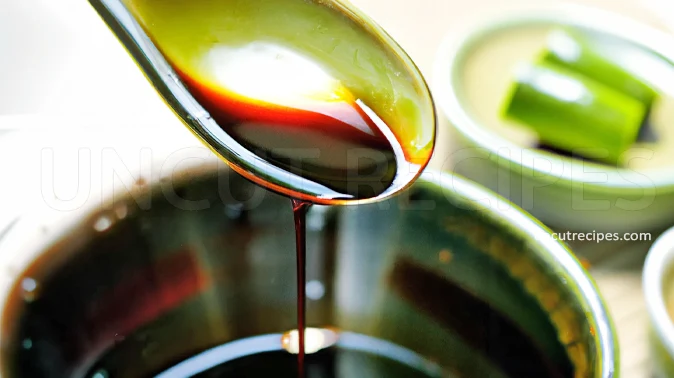
Stir occasionally, enjoying the delightful transformation as it turns into a thick syrup-like consistency. You'll know it's ready when it coats the back of a spoon and looks glossy. Enjoy!
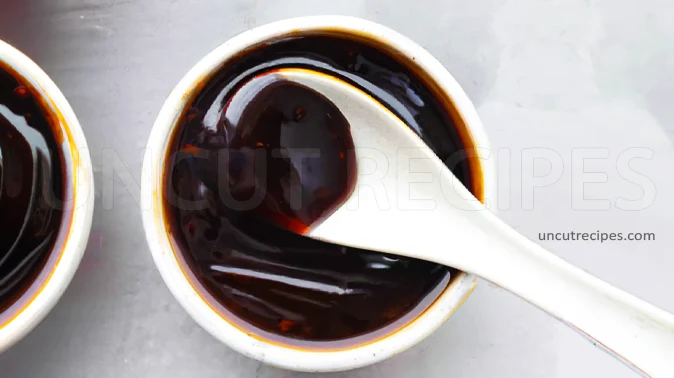
Notes:
Thickening Phase: Watching and stirring the sauce as it reduces helps in achieving the desired syrup-like consistency.
Soy Sauce Options: Depending on personal preference, you may choose between regular, low-sodium, or gluten-free soy sauce.
Brown Sugar Substitutes: White sugar or honey can be used in place of brown sugar if desired, but it may slightly alter the flavor profile.
Ginger Form: Fresh ginger is preferable, but powdered ginger could be used in a pinch. Adjust the amount accordingly.
Optional Additions: Some people like to add a pinch of red pepper flakes or chili oil for a bit of heat.
Storage Method: Once the Yakitori Sauce has cooled down, transfer it to an airtight container and store it in the refrigerator.
Shelf Life: Properly stored, the sauce should last up to 1-2 weeks in the refrigerator.
Reheating: If the sauce becomes too thick after storing, you can gently reheat it and add a splash of water to reach the desired consistency.
Freezing Option: For longer storage, the sauce can be frozen in an airtight container for up to 3 months. Thaw and reheat before use.
Nutritional Information
( Per Portion )
|
Calories |
100 kcal (5%) |
| Total Carbohydrate | 18g (7%) |
| Cholesterol | 0mg (0%) |
|
Total Fat |
0g (0%) |
| Saturated Fat | 0g (0%) |
| Polyunsaturated Fat | 0g (0%) |
| Monounsaturated Fat | 0g |
| Trans Fat | 0g |
| Fibers | 0g (0%) |
| Protein | 5g (10%) |
| Sugar | 15g (60%) |
|
Vitamin A |
0 IU (0%) |
|
Vitamin B1 (Thiamin) |
0.04mg (3%) |
| Vitamin B2 (Riboflavin) | 0.03mg (2%) |
| Vitamin B3 (Niacin) | 0.5mg (3%) |
| Vitamin B5 (Pantothenic Acid) | 0.1mg (2%) |
| Vitamin B6 | 0.03mg (2%) |
| Vitamin B7 (Biotin) | 0.6mcg (2%) |
| Vitamin B9 (Folate) | 5mcg (1%) |
| Vitamin B12 | 0mcg (0%) |
| Vitamin C | 0mg (0%) |
| Vitamin D | 0 IU (0%) |
| Vitamin E | 0mg (0%) |
| Vitamin K | 0mcg (0%) |
| Choline | 5mg (1%) |
| Carnitine | 0mg |
|
Calcium |
10mg (1%) |
|
Chloride |
5mg (1%) |
| Chromium | 0mcg (0%) |
| Copper | 0.05mg (6%) |
| Fluoride | 0mcg |
| Iodine | 3mcg (2%) |
| Iron | 1mg (6%) |
| Magnesium | 20mg (5%) |
| Manganese | 0.2mg (9%) |
| Molybdenum | 5mcg (11%) |
| Phosphorus | 30mg (4%) |
| Potassium | 100mg (2%) |
| Selenium | 5mcg (9%) |
| Sodium | 5500mg (239%) |
| Sulfur | 10mg |
| Zink | 0.5mg (5%) |
* Percent Daily Values are based on a 2,000 calorie diet. Your daily values may be higher or lower depending on your calorie needs.
** Nutrient information is available for all ingredients in this recipe. Amount is based on available nutrient data collected from all over the internet.
(-) Information is not currently available for this nutrient. If you are following a medically restrictive diet, please consult your doctor or registered dietitian before preparing this recipe for personal consumption. |
| Written by: Uncut Recipes | Disclaimer |


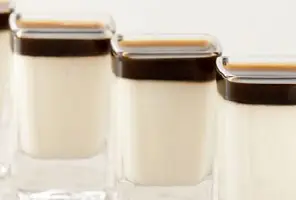
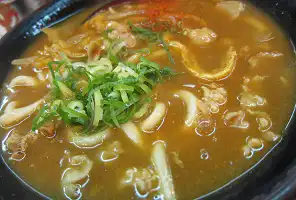
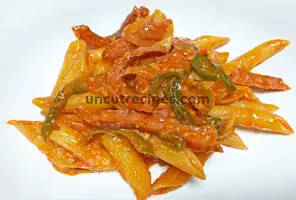
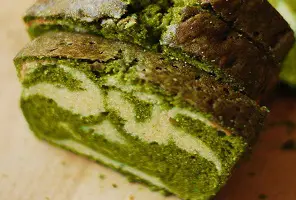
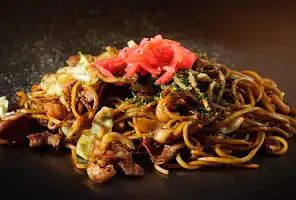

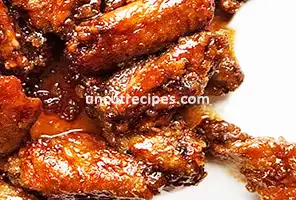

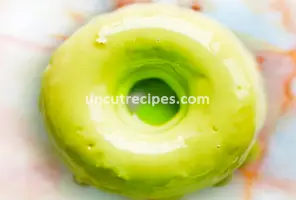



August 10, 2023
The yakitori was delicious!